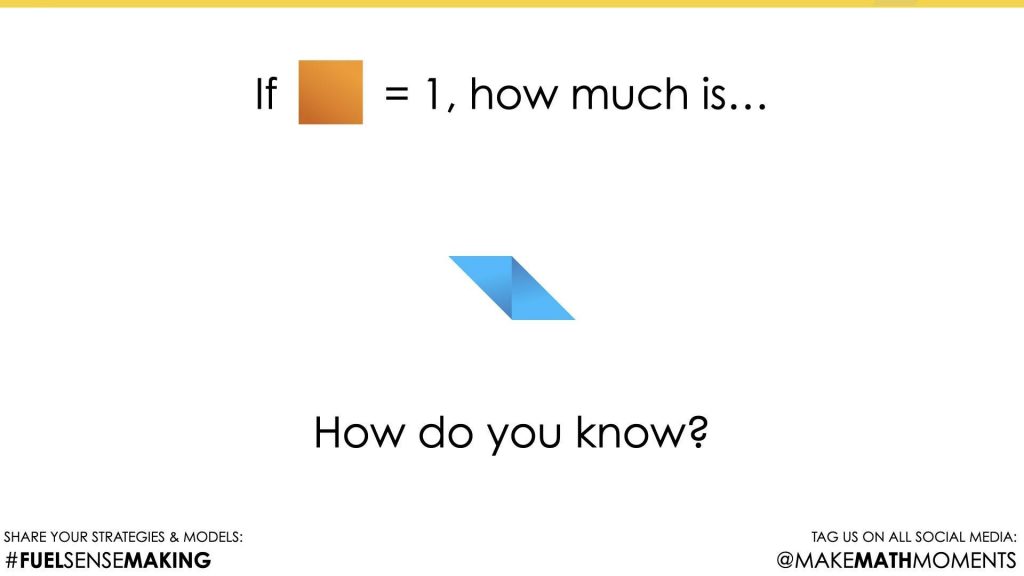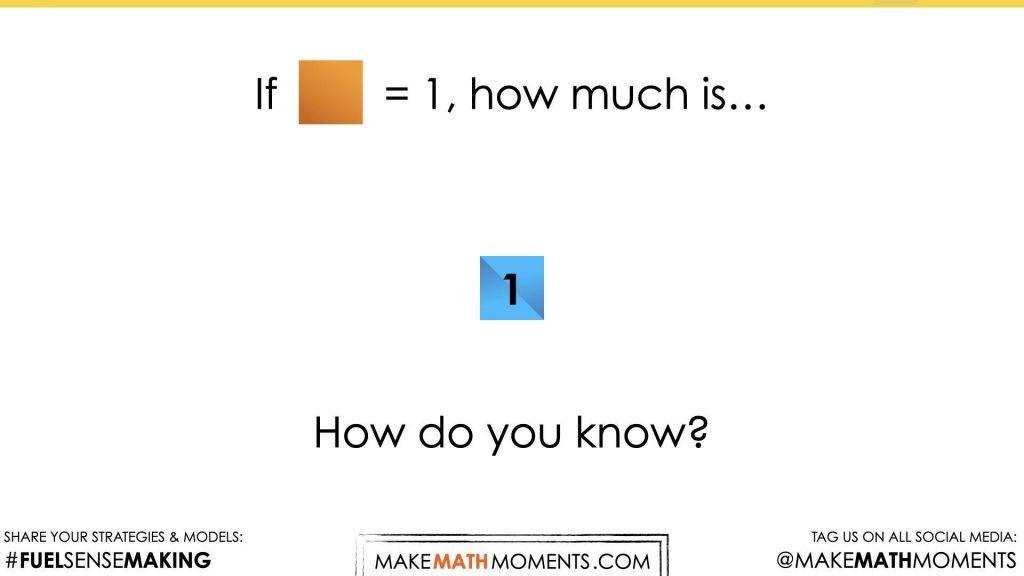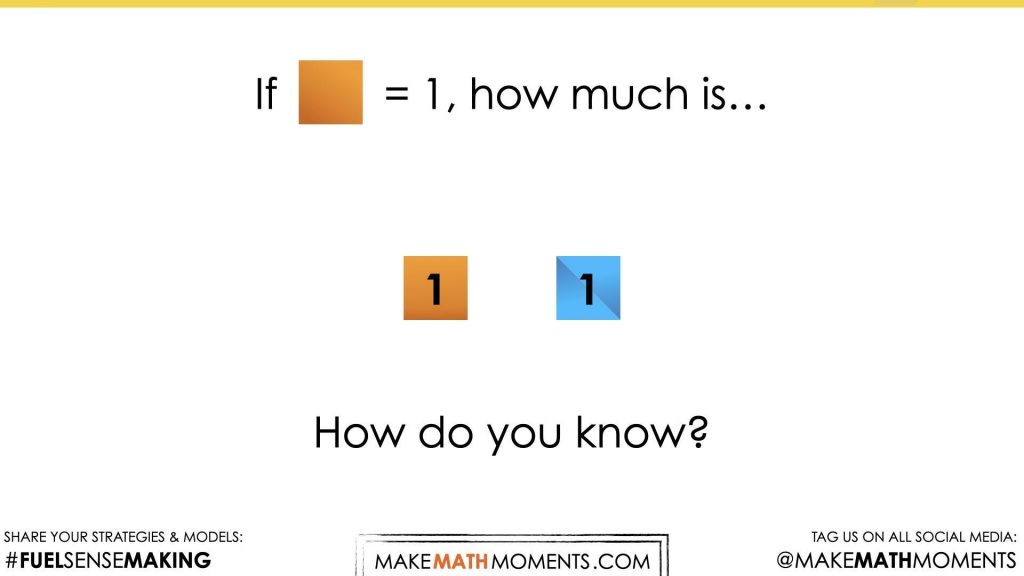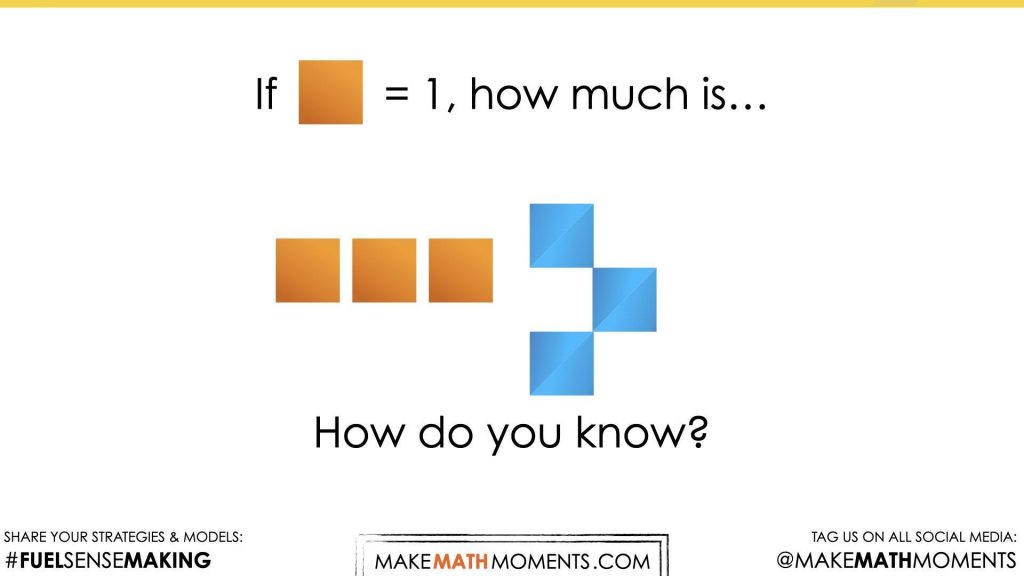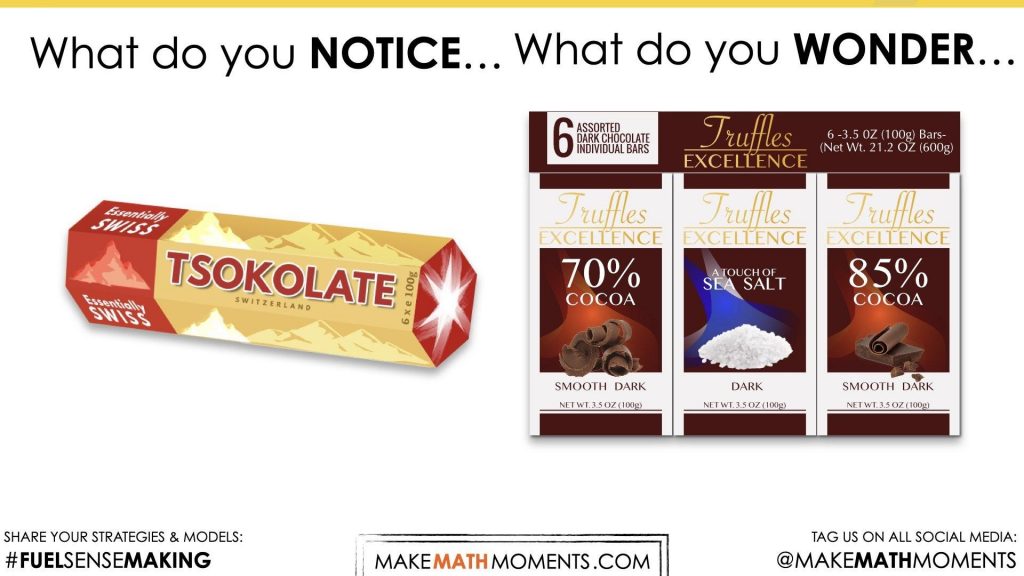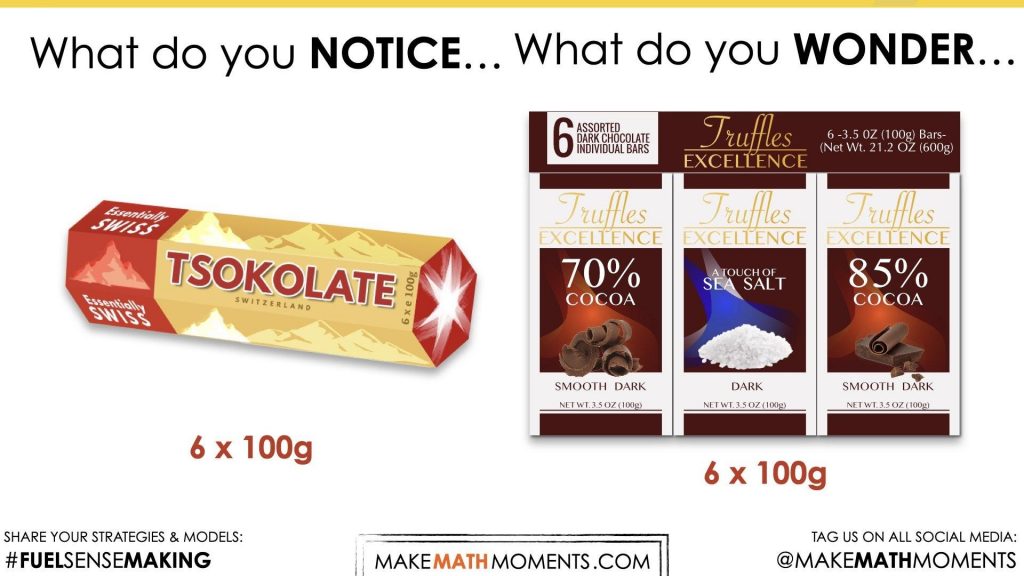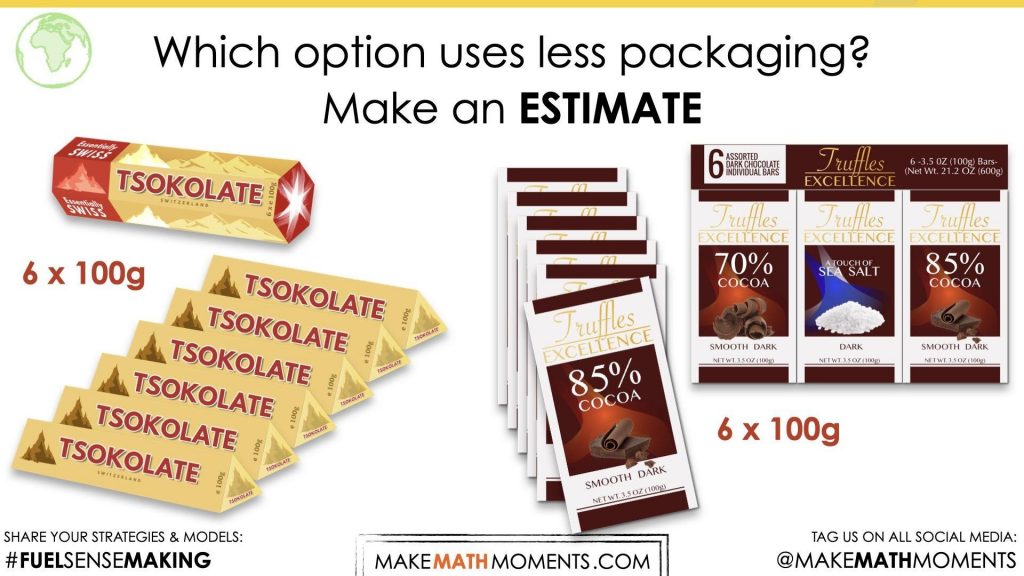CAN'T GET ENOUGH CEREAL [DAY 4]
VOLUME AND SURFACE AREA OF RECTANGULAR PRISMS
Explore concepts relating to volume and surface area of right prisms.
Intentionality
Math Talk
Visual Math Talk Prompt #1
Visual Math Talk Prompt #2
Visual Math Talk Prompt #3
Visual Math Talk Prompt #4
Visual Math Talk Prompt #5
Spark Curiosity
Fuel Sensemaking
During Moves
Student Approaches
Next Moves
Consolidation
Reflect and Consolidation Prompts
Resources & Downloads
Educator Discussion Area
Intentionality & Unit Overview

Length of Unit: 6 Days
Access each lesson from this unit using the navigation links below
In this task, students will calculate and compare the surface area of right prisms including rectangular and triangular prisms.
Intentionality…
In this task, students will compare the surface area of two different right prisms – a rectangular prism and a triangular prism. This task serves to illustrate the relationship between multiplication, addition and surface area.
Some of the big ideas that will likely emerge in this task include:
- Surface area is an attribute of a three-dimensional space
- Right prisms can be decomposed into measurable parts
- Area is the amount of surface or space inside a two-dimensional region
- Surface area is additive – area of parts can be combined to find the area of the whole
- The area of a rectangle having fractional side lengths can be found by tiling unit squares of the appropriate unit fraction
What You’ll Need…
A variety of tools for students to use to think through the problems, including, but not limited to:
- Grid paper
- Whiteboards & markers
- Connecting cubes
Math Talk
Throughout each prompt, students will be asked to determine the value of a figure composed of squares and triangles given the value of a square.
While you could simply leverage an image to display as you prompt students verbally, the following Visual Math Talk Prompts are helpful to Spark Curiosity and lower the floor on these problems so all students can enter into these tasks. Each of the videos reveals the value of the composite figure by decomposing the figure into individual squares and summing their values.
Visual Math Talk Prompt #1
Share the following Visual Math Talk Prompt video:
Students are encouraged to think about how the shapes can be decomposed, and how the parts relate to one another.
Pause the video where indicated, and share the following prompt:
If the orange square is worth 1 whole, how much is each shape worth?
Some students may be able to leverage their spatial reasoning skills to quickly conclude that the value of the blue parallelogram is 1, since it can be decomposed and recomposed into a square with the same dimensions as the orange square.
Once you resume playing the video, you’ll see the parallelogram decompose into two right triangles and recompose into a square.
Visual Math Talk Prompt #2
Begin playing the next Visual Math Talk Prompt video using the same prompt as the previous.
In this case, students may quickly notice that this figure is composed of a square wedged between the two right triangles that they encountered in the previous prompt.
Therefore, we can conclude (and the visual math talk prompt video will confirm via animation) that the value of the figure is 2.
Visual Math Talk Prompt #3
Continue this series of related Visual Math Talk Prompts with the following silent solution animation:
The figure students are confronted with is:
Hopefully students will be able to quickly conclude that there are 3 orange squares in this figure and that the 6 right triangles can compose an additional 3 squares for a total value of 6.
Visual Math Talk Prompt #4
Login/Join to access additional Visual Math Talk Prompts as well as the Teacher Guide, downloadable slide decks and printable handouts for this lesson and all problem based units.
Visual Math Talk Prompt #5
Login/Join to access additional Visual Math Talk Prompts as well as the Teacher Guide, downloadable slide decks and printable handouts for this lesson and all problem based units.
Spark Curiosity
What Do You Notice? What Do You Wonder?
Show students the following image:
Then, ask students:
What do you notice?
What do you wonder?
Have students do a Think-Pair-Share routine:
- Students have individual think time to jot down ideas on paper or whiteboard.
- Students share their initial ideas with a partner.
- Students share as a whole group, either their own preference, or a meaningful observation they heard from their partner during the share (while giving credit to their partner). All contributions are acknowledged and recorded on an anchor chart on the board.
Possible points that may come up include:
- I notice that there’s two different brands of chocolate.
- I wonder which box of chocolate has more.
- I notice one of the chocolates is wrapped in a hexagon shape.
- I notice that one has different chocolate flavours in it.
- I wonder why they have different shapes.
- I wonder which one is more expensive.
Spending time to acknowledge and address specific thoughts that students shared, whether a notice or a wonder, is crucial to building a culture in your classroom where students know that their voice is being valued and thus encourages them to continue sharing their thoughts and opinions later in this lesson and in future lessons.
At this point, you may cross off some wonderings from the list:
- both packages have the same amount of chocolate
Estimation: Prompt
Once students’ initial ideas have been acknowledged and noted, the class can settle on a question to explore:
Which option uses the least amount of packaging?
Make an estimate.
Students begin by making an estimate before they are provided with all the information they need to answer the question, thus providing students who may be reluctant to share with a safe entry point.
Students should be given an opportunity to share their estimates at this point, but refrain from sharing their rationale just yet in order to give everyone a chance to develop their own thinking.
Have students turn to a partner and generate questions they could ask that would provide them with information they could use to answer the question. Ask students how they would use the information to answer the question.
Prompt:
What information would you need to answer the question?
How would you use that information?
Estimation: Partial Reveal & Update
Login/Join to access the entire Teacher Guide, downloadable slide decks and printable handouts for this lesson and all problem based units.
While Students are Revising Their Estimates
Login/Join to access the entire Teacher Guide, downloadable slide decks and printable handouts for this lesson and all problem based units.
Fuel Sense-making
Crafting A Productive Struggle: Prompt
Login/Join to access the entire Teacher Guide, downloadable slide decks and printable handouts for this lesson and all problem based units.
During Moves
While Students Are Productively Struggling…
Login/Join to access the entire Teacher Guide, downloadable slide decks and printable handouts for this lesson and all problem based units.
Student Approaches
Student Approach #1: Scale Model and Visual Approximation
Login/Join to access the entire Teacher Guide, downloadable slide decks and printable handouts for this lesson and all problem based units.
Student Approach #2: Direct Modeling and Combination/Congruency Seeking
Login/Join to access the entire Teacher Guide, downloadable slide decks and printable handouts for this lesson and all problem based units.
Student Approach #3: Fraction/Decimal Equivalencies and Use of an Algorithm
Login/Join to access the entire Teacher Guide, downloadable slide decks and printable handouts for this lesson and all problem based units.
Next Moves
Reveal
Login/Join to access the entire Teacher Guide, downloadable slide decks and printable handouts for this lesson and all problem based units.
Consolidation
Making Connections
Login/Join to access the entire Teacher Guide, downloadable slide decks and printable handouts for this lesson and all problem based units.
Reflect and Consolidation Prompts
Consider asking students to complete the following consolidation prompt independently.
Consolidation Prompt #1:
Login/Join to access the entire Teacher Guide, downloadable slide decks and printable handouts for this lesson and all problem based units.
Consolidation Prompt #2:
Login/Join to access the entire Teacher Guide, downloadable slide decks and printable handouts for this lesson and all problem based units.
Resources & Downloads
Login/Join to access the entire Teacher Guide, downloadable slide decks and printable handouts for this lesson and all problem based units.
Printable Lesson Plan PDF
Videos, Images & Media Files
Apple Keynote Presentation
Powerpoint Presentation
Printable Consolidation Prompts
Educator Discussion Area
Login/Join to access the entire Teacher Guide, downloadable slide decks and printable handouts for this lesson and all problem based units.
Explore Our 60+ Problem Based Units
This Make Math Moments Lesson was designed to spark curiosity for a multi-day unit of study with built in purposeful practice, number talks and extensions to elicit and emerge strategies and mathematical models.
Dig into our other units of study and view by concept continuum, grade or topic!


